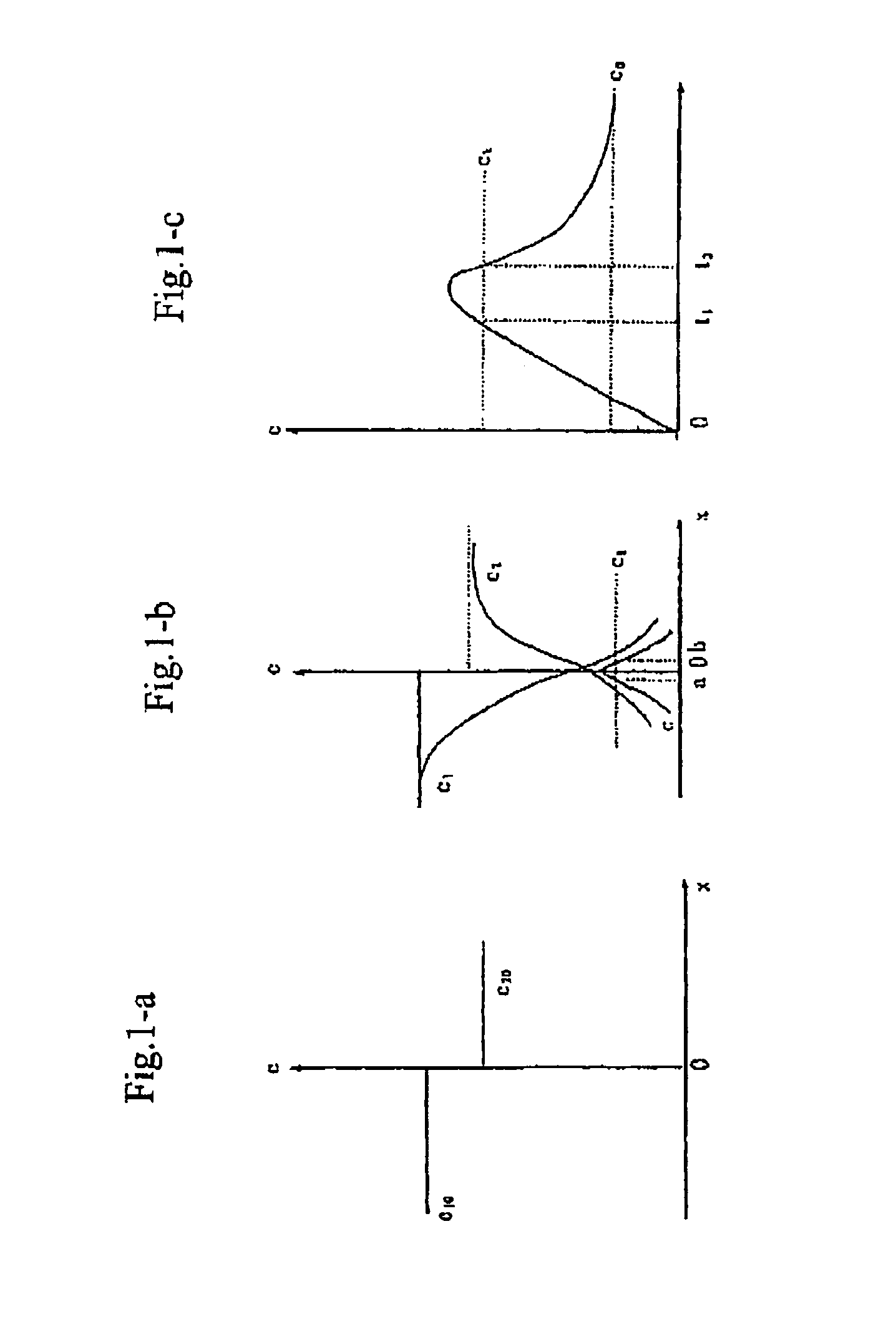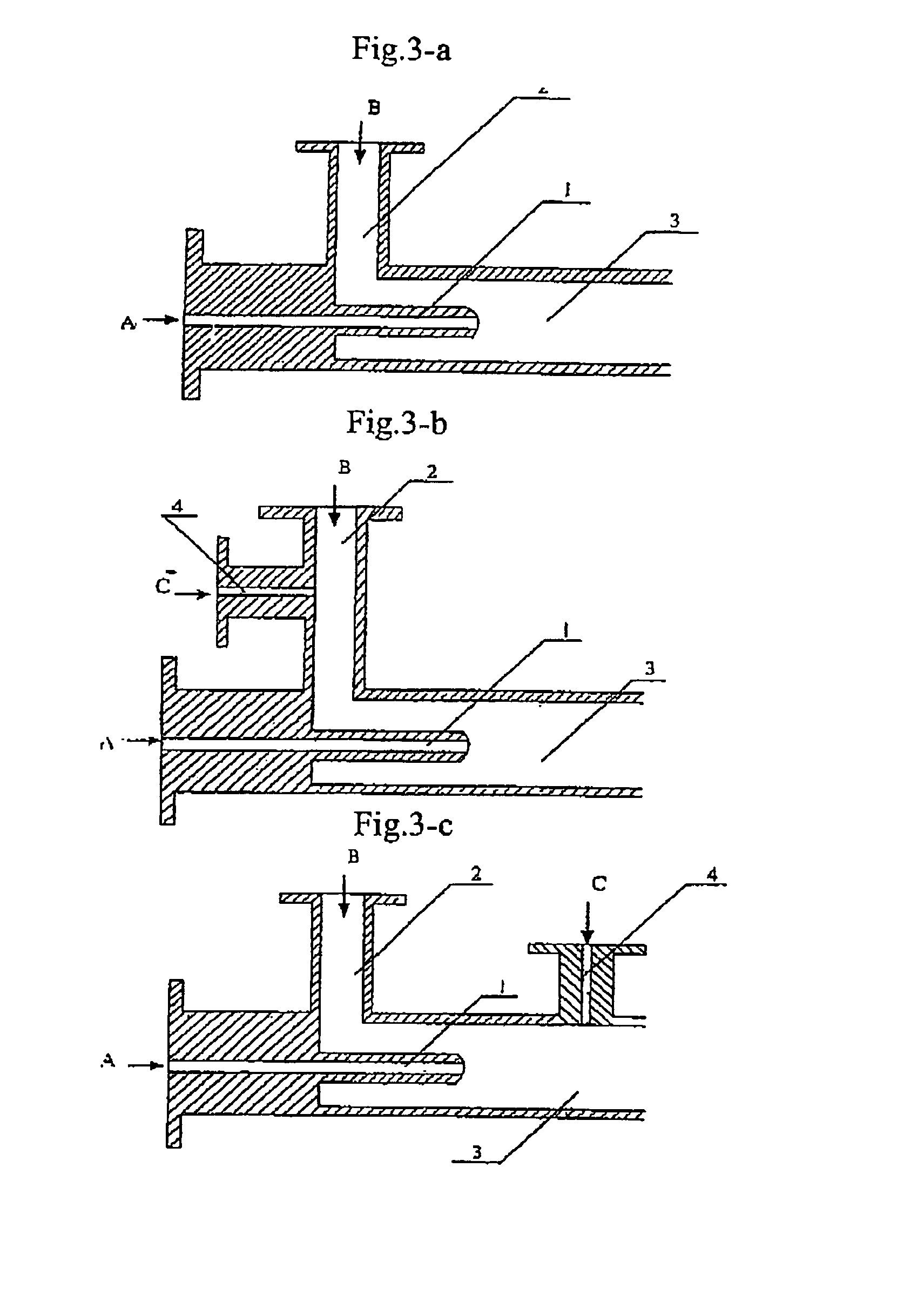Process for producing nano-powders and powders of nano-particle loose aggregate
a nano-particle and loose aggregate technology, applied in the field of ultra fine powder preparation, can solve the problems of difficult to eliminate hard agglomeration among particulates, difficult to control particle diameter, difficult to obtain very small particle diameter,
- Summary
- Abstract
- Description
- Claims
- Application Information
AI Technical Summary
Benefits of technology
Problems solved by technology
Method used
Image
Examples
example 1
[0091]773.4 g of zirconium oxide chloride ZrOCl2.8H2O (molecular weight=322.25 and purity≧99%) was weighed and 3000 ml of 0.8 mol / L ZrOCl2 aqueous solution was prepared from the zirconium oxide chloride, called solution A. Secondly-distillated water and then 2100 ml of ethanol (95%) as a dispersing agent were added to 375 ml of ammonia having a NH3 concentration of 25% to produce 3000 ml of an aqueous solution called solution B. Solution A and solution B were mixed in a tubular coaxial ejection mixing reactor as shown in FIG. 3-a and reacted with each other to form precipitate at room temperature of 20° C. as illustrated in the process flow chart shown in FIG. 2. The pH value of the resultant was adjusted to be 7–8 by the addition of ammonia. The tubular coaxial ejection mixing reactor had an inner diameter of 10 mm and an inner diameter of spray hole of 1 mm. The flows of solution A and solution B are both 200 L / h. The pressure at the spray inlet for solution A was 100 kg / cm2. The ...
example 2
[0092]333.6 g of ZnCl2 was weighed and secondly-distillated water was added to produce 3000 ml of 0.8 mol / L ZnCl2 aqueous solution called solution A at a temperature of 70° C. 900 ml ethanol (95%) as a dispersing agent was added to 375 ml of ammonia water (25%) to produce 3000 ml of 0.8 mol / L NH3 aqueous solution in ethanol called solution B at a temperature of 30° C. Solution A and solution B were mixed in a tubular coaxial ejection mixing reactor as shown in FIG. 3-a and reacted with each other to form precipitate as illustrated in the process flow chart shown in FIG. 2. The pH value of the resultant was adjusted to be 7–8 by the addition of ammonia. The tubular coaxial ejection mixing reactor had an inner diameter of 10 mm and an inner diameter of spray hole of 1 mm. The flows of solution A and solution B are both 150 L / h. The pressure at the spray inlet for solution A was 90 kg / cm2. The slurry containing the resulting precipitate was fed into a continuously-running equipment for...
example 3
[0093]441.6 g of BaCI2 was weighed and secondly-distillated water and 900 ml ethanol were added to produce 3000 ml of 0.6 mol / L BaCl2 aqueous solution called solution A at a temperature of 20° C. 156.6 g of NH4HCO3 was weighed and secondly-distillated water, 180 ml of ammonia water (25%) and 1200 ml of ethanol (95%) as a dispersing agent were added to produce a 3000 ml solution called solution B at a temperature of 20° C. Solution A and solution B were mixed in a tubular coaxial ejection mixing reactor as shown in FIG. 3-a and reacted with each other to form precipitate as illustrated in the process flow chart shown in FIG. 2. The pH value of the resultant was adjusted to be 7–8 by the addition of ammonia water. The tubular coaxial ejection mixing reactor had an inner diameter of 10 mm and an inner diameter of spray hole of 1 mm. The flows of solution A and solution B are both 160 L / h. The pressure at the spray inlet for solution A was 100 kg / cm2. The slurry containing the resulting...
PUM
| Property | Measurement | Unit |
|---|---|---|
| temperature | aaaaa | aaaaa |
| residence time | aaaaa | aaaaa |
| residence time | aaaaa | aaaaa |
Abstract
Description
Claims
Application Information
 Login to View More
Login to View More - R&D
- Intellectual Property
- Life Sciences
- Materials
- Tech Scout
- Unparalleled Data Quality
- Higher Quality Content
- 60% Fewer Hallucinations
Browse by: Latest US Patents, China's latest patents, Technical Efficacy Thesaurus, Application Domain, Technology Topic, Popular Technical Reports.
© 2025 PatSnap. All rights reserved.Legal|Privacy policy|Modern Slavery Act Transparency Statement|Sitemap|About US| Contact US: help@patsnap.com



